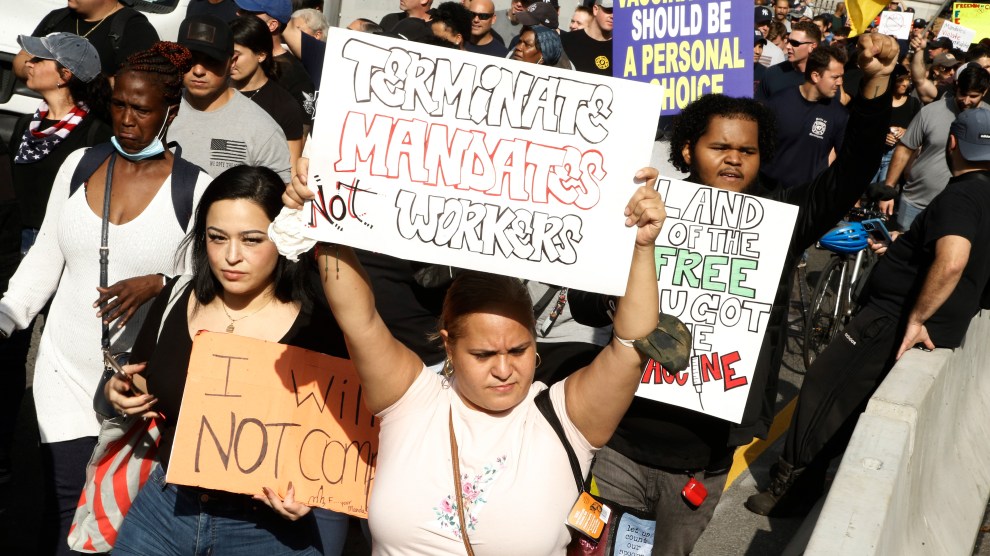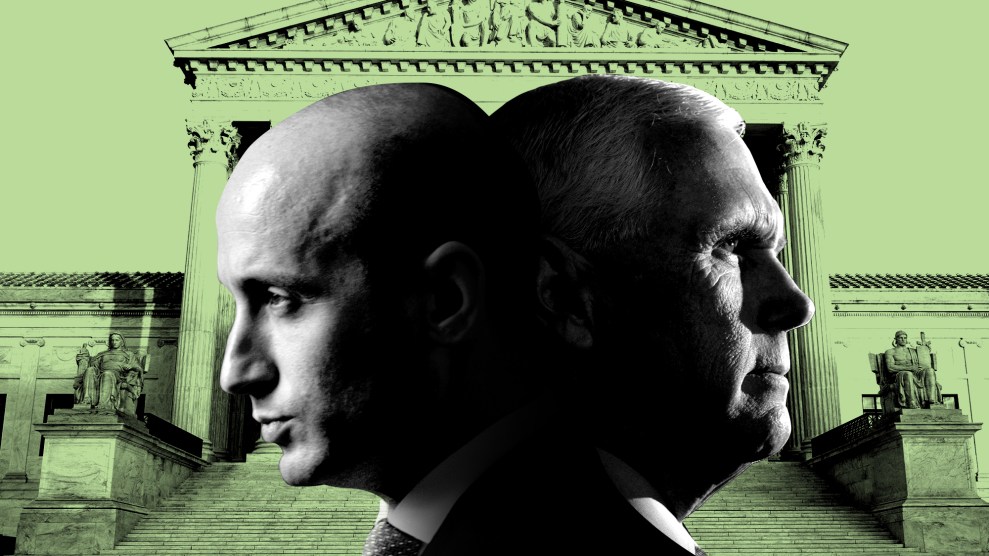
People protest vaccine mandates in New York City in October 2021.John Lamparski/NurPhoto/Zuma
Unless you work in health care, federal vaccine mandates are off.
In two decisions handed down Thursday afternoon, the Supreme Court blocked a rule requiring workers at large businesses to either get vaccinated or get tested weekly, but upheld a mandate that certain health care workers be vaccinated.
All six conservative judges voted to block the vaccine-or-test rule for workers at companies with 100 or more staffers, arguing that the Occupational Health and Safety Administration didn’t have the authority to impose public health measures. In their dissent, the three liberal justices argued that OSHA’s rule enacted the agency’s core mission: “to ‘protect employees’ from ‘grave danger’ that comes from ‘new hazards’ or exposure to harmful agents.”
But, in a 5-4 decision, the Supreme Court ruled that facilities that receive Medicare and Medicaid funding could continue requiring workers to be vaccinated. While Justices Thomas, Alito, Gorsuch, and Barrett all argued that the government wasn’t entitled to impose the mandate, the majority of the bench found that the Health and Human Services rule fell within the organization’s “core mission” to ensure that health care providers “protect their patients’ health and safety.”
If it had been allowed to take effect, Biden’s vaccine mandate would have applied to about 84 million workers and prevented a quarter million hospitalizations and 6,500 deaths over the next six months, per OSHA’s calculations. The liberal justices said that the ruling usurps a decision that federal officials were entitled to make. “In the face of a still-raging pandemic, this Court tells the agency charged with protecting worker safety that it may not do so in all the workplaces needed,” they wrote. “As disease and death continue to mount, this Court tells the agency that it cannot respond in the most effective way possible.”












